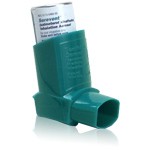Managing Bronchial Asthma


Bronchial asthma is a chronic respiratory disease that affects millions of people across the globe. Characterized by inflammation and narrowing of the airways, this condition causes recurring episodes of wheezing, breathlessness, chest tightness, and coughing. Asthma can have a significant impact on daily life and, in some cases, become life-threatening if not properly managed. This article provides a comprehensive overview of bronchial asthma, how it differs from general asthma terminology, what triggers it, and how it can be treated — particularly focusing on the role of the Serevent inhaler in long-term management.
What Is Bronchial Asthma?
Bronchial asthma is a type of asthma that specifically involves inflammation of the bronchial tubes, the airways that carry air to and from the lungs. When exposed to certain stimuli or allergens, the bronchial tubes in people with asthma become inflamed and overly sensitive. This leads to tightening of the muscles around the airways (bronchospasm), swelling of the lining, and increased mucus production, all of which narrow the airways and make breathing difficult.
This chronic condition can vary in severity — from mild symptoms that occur occasionally to persistent daily challenges. Asthma attacks can arise suddenly and may require immediate intervention. Importantly, the inflammatory nature of bronchial asthma makes it a long-term disease that typically needs continuous treatment and monitoring.
Difference Between Asthma and Bronchial Asthma
While the terms asthma and bronchial asthma are often used interchangeably, there is a subtle difference. In clinical contexts, asthma refers to a broader group of conditions characterized by chronic airway inflammation and hyperresponsiveness. This includes bronchial asthma but also encompasses other forms such as exercise-induced asthma or occupational asthma.
Bronchial asthma, more specifically, focuses on the inflammation of the bronchial tubes — the lower part of the respiratory tract. In contrast, some rare forms of asthma may involve other parts of the respiratory system or may be classified differently due to their triggers or pathophysiology.
Thus, while all bronchial asthma is asthma, not all types of asthma are referred to specifically as bronchial. However, for most practical purposes, especially in general medicine, the terms are used synonymously to refer to the common form of asthma affecting the bronchial airways.
What Triggers Bronchial Asthma?
Understanding what triggers bronchial asthma is crucial for managing the condition. Triggers are external or internal factors that cause the airway inflammation to flare up, leading to symptoms. These triggers vary from person to person, but there are common patterns.
Environmental allergens such as pollen, dust mites, mold spores, and pet dander are among the most frequent culprits. When inhaled, these allergens prompt an immune response in sensitive individuals, leading to bronchial inflammation and narrowing.
Respiratory infections, particularly viral infections like the common cold or flu, often precipitate asthma exacerbations. In children, such infections are one of the leading causes of asthma attacks.
Air pollution, including tobacco smoke, exhaust fumes, and industrial chemicals, can significantly aggravate asthma symptoms. Even strong odors, perfumes, or household cleaning products may trigger bronchospasm in sensitive individuals.
Physical activity, particularly in cold or dry environments, may induce symptoms in people with exercise-induced asthma. Emotional stress, intense laughter, or even crying can also lead to an attack in some cases due to hyperventilation and airway constriction.
Certain medications, such as non-selective beta-blockers and non-steroidal anti-inflammatory drugs (NSAIDs), are known to provoke symptoms in susceptible patients. Hormonal changes, particularly during menstruation or pregnancy, may influence asthma control in women.
Identifying and avoiding known triggers is a cornerstone of asthma management, as it helps reduce the frequency and severity of attacks and improves quality of life.
First-Line Treatment for Bronchial Asthma
The treatment of bronchial asthma is typically divided into two broad categories: reliever medications and controller medications. First-line treatment refers to the standard initial approach taken to manage the condition, particularly in mild to moderate cases.
Inhaled short-acting beta2-agonists (SABAs), such as salbutamol, are commonly used as relievers. These medications provide rapid bronchodilation, relaxing the airway muscles within minutes, and are typically used on an as-needed basis for quick symptom relief.
However, for long-term control, especially when symptoms occur frequently or are persistent, inhaled corticosteroids (ICS) are considered the first-line controller therapy. These anti-inflammatory drugs reduce airway inflammation, decrease mucus production, and prevent exacerbations. Budesonide, fluticasone, and beclomethasone are examples of commonly used inhaled corticosteroids.
In cases where symptoms are not adequately controlled by ICS alone, long-acting beta2-agonists (LABAs) are added to the regimen. The combination of ICS and LABA offers improved symptom control and reduces the need for rescue medication. One of the most widely used LABAs is salmeterol, which is available in medications like the Serevent inhaler.
Other treatments include leukotriene receptor antagonists (LTRAs), theophylline, or biological therapies in more severe cases. However, these are generally considered second-line or adjunctive treatments.
Asthma management also includes the development of an individualized asthma action plan, regular monitoring of lung function, and periodic review of treatment effectiveness. Education on proper inhaler technique is essential to ensure that medication is delivered effectively to the lungs.
The Role of Serevent Inhaler in Bronchial Asthma
The Serevent inhaler is a long-acting beta2-agonist (LABA) inhaler that contains salmeterol xinafoate as the active ingredient. It is used for the maintenance treatment of bronchial asthma and is not suitable for the relief of acute symptoms. Its primary role is in preventing bronchospasm and maintaining open airways over a prolonged period.
Salmeterol acts by stimulating beta2 receptors in the bronchial smooth muscle, leading to muscle relaxation and bronchodilation. Unlike short-acting bronchodilators, Serevent provides sustained action for approximately 12 hours, which makes it particularly effective for controlling nocturnal symptoms and for preventing exercise-induced bronchoconstriction.
The Serevent inhaler is typically prescribed in conjunction with an inhaled corticosteroid, as monotherapy with a LABA has been associated with increased risks in some patients. When used in combination, it enhances the efficacy of the corticosteroid and helps reduce the number and severity of exacerbations.
It is often included as part of step-up therapy in patients whose asthma is not controlled by low- or medium-dose ICS alone. For example, a combination inhaler such as Seretide (which contains both fluticasone and salmeterol) may be prescribed for more convenient use and better compliance.
The correct use of the Serevent inhaler is crucial. Patients should be trained to inhale the medication deeply and hold their breath for a few seconds to allow the drug to reach deep into the lungs. It is also important to rinse the mouth after using the inhaler to prevent oral side effects such as candidiasis.
Serevent has proven to be effective in reducing nighttime awakenings, improving lung function, and enhancing overall quality of life in people with moderate to severe persistent asthma. However, its use must be carefully monitored, and it should never be used as a substitute for a rescue inhaler in acute situations.
Conclusion
Bronchial asthma is a chronic, often lifelong condition that requires continuous management and monitoring. Characterized by airway inflammation and bronchial hyperresponsiveness, it leads to episodes of wheezing, coughing, and difficulty breathing that can significantly impair quality of life. Understanding the difference between general asthma and bronchial asthma, recognizing triggers, and applying appropriate first-line treatment is essential for effective control.
Medications remain the cornerstone of asthma management, with inhaled corticosteroids as the first-line therapy for maintenance and short-acting beta2-agonists for quick relief. In patients with persistent or severe symptoms, the use of long-acting bronchodilators such as the Serevent inhaler becomes indispensable. When used properly and as part of a broader treatment plan, Serevent helps keep symptoms under control, reduces exacerbations, and improves long-term outcomes.
With patient education, lifestyle adjustments, and adherence to a well-structured treatment plan, most individuals with bronchial asthma can lead active, healthy lives with minimal limitations.
Medically Reviewed by Dr. Rabeea Aboufakher, MD
(Updated at Jul 3 / 2025)

